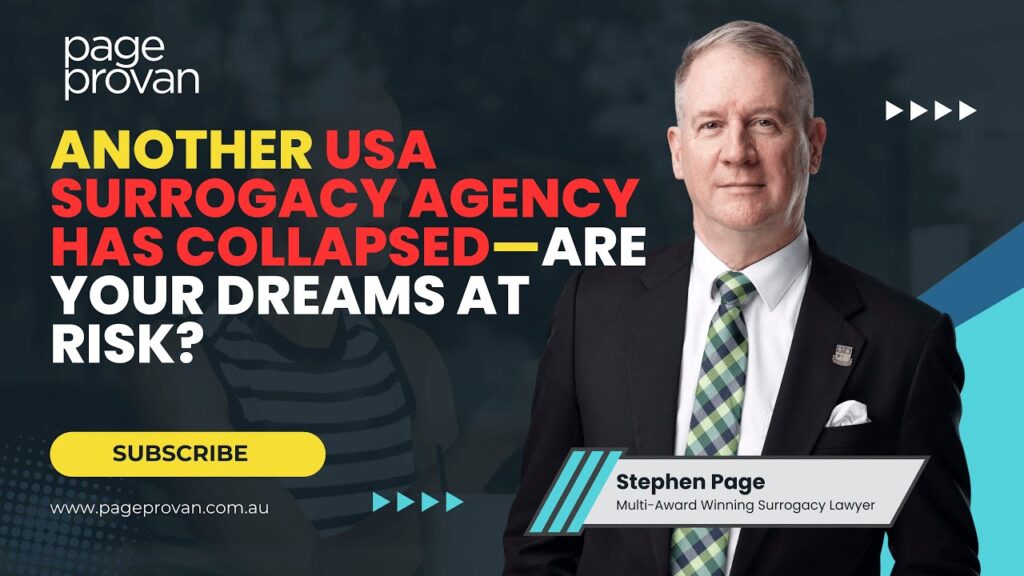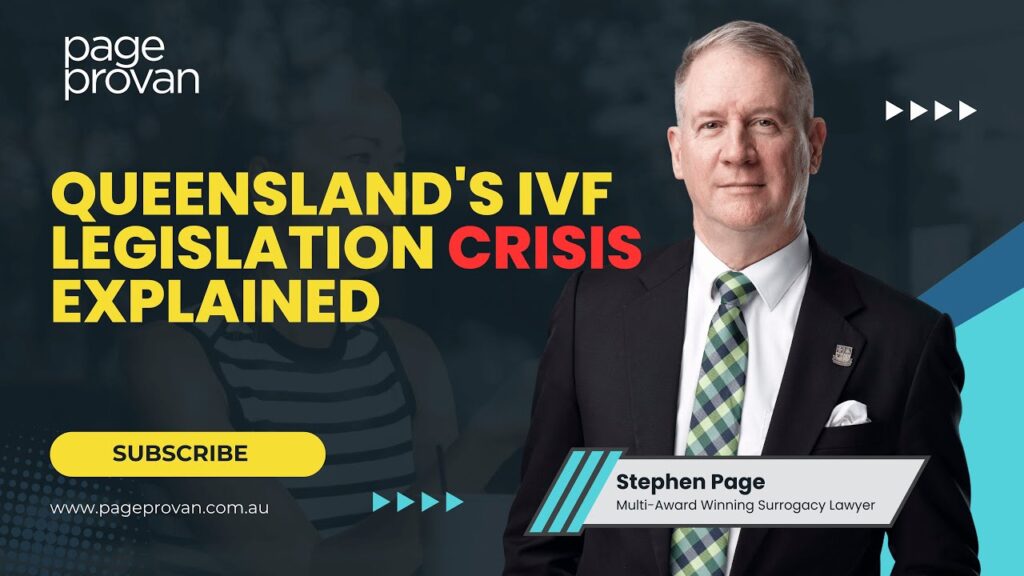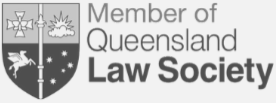Australians Going to the USA for Surrogacy (the Numbers)
In this video, Accredited Family Law Specialist and Page Provan Director Stephen Page talks about the places Australians go to for surrogacy, particularly, the United States.
Transcript
G’day. It’s Stephen Page from Page Provan Family and Fertility Lawyers. Today, I’m talking about two things: where Australians go in terms of numbers and particularly really, one place where they go – the United States.
So in other videos, I’ve talked about some of the places that Australians go, some of the more obscure places, unexpected places that Australians go for surrogacy, such as Belarus and Bangladesh. And in another video, I’ve talked about the top five places that Australians go.
And I made mention that for every child born in Australia via surrogacy, three were born overseas. And this isn’t some figure that I’ve just made up. This is done by comparing two sets of figures and you can see them for yourselves at the paper and you’ll see the link below the screen.
These sources are the Department of Home Affairs and what is called ANZARD. So the Department of Home Affairs deals with applications for children for Australian citizenship by descent. And the Department keeps statistics on the number of children who apply for Australian citizenship by descent, where they are born overseas via surrogacy. And they’ve been doing it for many years.
And the other source of statistics is the Australian New Zealand Assisted Reproductive Database, or what’s called ANZARD. And this is an audit process that is run by IVF clinics in Australia and New Zealand, and it’s run by the conjunction of the Fertility Society of Australia and New Zealand. And you know that I’m on the board of that. I’ve just come onto the board of that and at the University of New South Wales. Now I have nothing to do with the operation of ANZARD, even though I’m a director of the Fertility Society of Australia and New Zealand. And even though I’m a lecturer in ethics and the law and reproductive medicine at the University of New South Wales. I don’t sort these numbers.
And there is some slight difficulty with these numbers because New Zealand is incorporated in the numbers. And to put it in population terms, we’ve got about 25 million in Australia and there are about 5 million in New Zealand. So five to one we have here. So about 20% of the numbers if we’re doing it at the same rate per capita, and no one knows that we don’t have any statistics on that, then about 20% of the figures for ANZARD will come from New Zealand clinics.
Sadly, I’ve not been able to find any statistics from New Zealand about the number of children where court orders have been made for surrogacy. And it’s very hard to find those figures in Australia because they go state-to-state. The ANZARD figures deal with gestational surrogacy, not traditional surrogacy. So the surrogate has no genetic connection with the child. So there will be some traditional surrogacy cases which aren’t picked up. But what do the numbers tell us?
Well, we started off with a very low base, and then it sort of levelled out a bit. So way back in 2005, there were five domestic gestational surrogacy births in Australia and New Zealand, and this was at a time when surrogacy could be done in the ACT, at least ACT was the pioneer, and that was about it. And slowly over time it’s increased. So, for example, five years later, in 2010, there were 16 births in Australia and New Zealand from domestic surrogacy.
And then we’ve slowly crept up. These numbers are a couple of years behind, because that’s how ANZARD operates, and they operate from a calendar year.
But what do we see? By 2017, there were 62. 2018, there were 86. 2019, there was a slight dip of 73.
The figures from the Department of Home Affairs show a remarkable change. In 2009, and they operate on it on a financial year, so 1 July this year to 30 June next year. So they’re six months out. But they’re the best we’ve got.
So in the 2009 calendar year, there were 19 domestic births through surrogacy in Australia, New Zealand, but ten international births of children through surrogacy in Australia. And you go, “Okay, we’re doing more domestically than we’re doing internationally. And we know the domestic figure has gone up to about 80 odd to 70 odd. What do we see about the international figure?” Well, we had a slight increase.
It dipped a bit in 2010, less than ten. And then 2011, it went to 30. And then we had the drama year. In 2012, it went to 266. It went absolutely off the dial. And ever since then, it’s largely remained at that kind of number. In 2016, for example, it’s 214. In 2017, it dipped down to 139. In ‘18, it was 175. In 2019, it went up to 232 and 2020, 275. And as best I can annualize it this year to 30 June 2021, it was 259.
So why did it suddenly increase? Well, strangely enough, by politicians telling intended parents “Don’t go overseas for surrogacy.” Queensland had laws to that effect. The ACT had laws to that effect. But New South Wales decided it was going to revamp its surrogacy laws, like all the other states. And they had an inquiry. They didn’t talk about people going overseas. They had a government response to that. They didn’t talk about people going overseas.
They then put a bill before the Parliament. They didn’t talk about people going overseas. And then was the magic moment when a politician stood up and said, “I want to amend this bill. I want to criminalise those who go overseas for surrogacy (commercial surrogacy).” And then there was a firestorm.
There was a firestorm of publicity, an enormous amount of publicity. And what did that politician achieve by doing that, rather than discourage people from going overseas for commercial surrogacy, here was all this publicity. Oh, you can do it. People who didn’t know they could do it could do it. And so since then, every last year, there’s been close to 200 or over 200 children born overseas.
So in the most recent years, if we compare 2019, we have 73 children born in Australia and New Zealand via Surrogacy and we have 232 born overseas, three to one.
For more information and Seeking Legal Advice contact our Surrogacy Lawyers Sydney.












